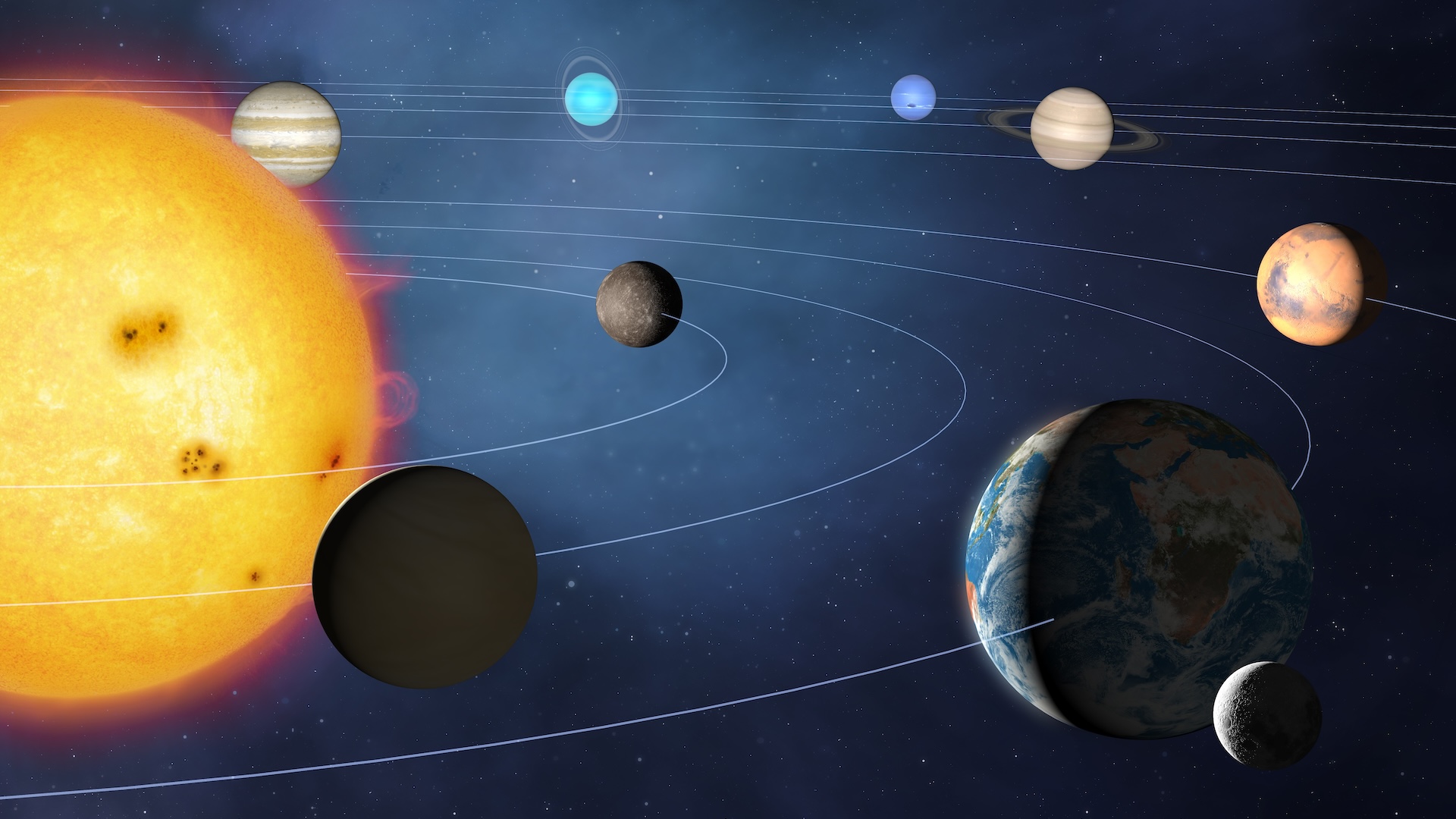See a 'parade' of 6 planets fill the sky on Saturday night — before a bonus 7th planet joins in March
Worlds will align for a "planetary parade" in January, with four bright and easily visible to the naked eye. But an even better view arrives in February and March. Here's what you need to know.

This month, six planets in the solar system — Mars, Jupiter, Uranus, Venus, Neptune and Saturn — will appear in Earth's skies in a "parade of planets."
Although the dark hours of Jan. 25 will be a good time to see it, as various media outlets have publicized, this sight will not be restricted to one or two nights. It will be possible to see a giant arc of planets any clear night in January (and it was visible in December, too). And, in fact, an even greater opportunity lies in the months ahead, when yet another planet joins the "parade."
Which planets will be visible in January?
Jan. 25 is a good time to look at the arc of planets because the moon will be a slim, waning crescent. That clears the way for dark evening skies, though light pollution won't hamper views of the bright planets.
On Jan. 25, it will be possible to see Saturn and Venus close to each other in the west with Jupiter shining above in the south and Mars (fresh from its bright opposition on Jan. 15) above in the east. Uranus will be just to the right of Jupiter, while Neptune will be right above Venus. To see Uranus and Neptune, however, you'll need a powerful backyard telescope.
If there's heavy cloud cover near you or you have to miss the parade for some other reason, the Virtual Telescope Project will be hosting a free live stream of the event beginning at 12:30 pm ET on Saturday.
Related: The 10 best stargazing events of 2025
A newcomer joins in March
The effect will be striking — but an even greater sight can be had in the first week of March, when Mercury will join the fray.
Sign up for the Live Science daily newsletter now
Get the world’s most fascinating discoveries delivered straight to your inbox.
As Mercury closes in on its greatest elongation east (farthest from the sun in Earth's sky) on March 8, the tiny inner planet will be between Saturn and Venus close to the western horizon. For good measure, you'll also see a slim crescent moon just above the trio. Neptune, though invisible to the naked eye, will be alongside Mercury. Above will be Uranus (not visible without a telescope), Jupiter and Mars.
However, the parade will eventually come to an end, with Saturn sinking into the sun's glare. It will be in solar conjunction on March 12, effectively ending any chance of a parade of planets.
While they will all share the night sky at the same time, the planets are not aligned during these parades, as is often mistakenly claimed. All of the planets orbit the solar system on the same plane, called the ecliptic. The ecliptic is the same path the sun takes in the daytime sky. As seen from Earth, whatever is on one side of the solar system is visible in the evening sky, and everything on the opposite side is present in the morning sky. However, whatever planets are visible and always seen along the ecliptic are always in some sort of a line.
Editor's note: This article was updated on Jan. 24 to include new information about viewing the planetary parade.

Jamie Carter is a freelance journalist and regular Live Science contributor based in Cardiff, U.K. He is the author of A Stargazing Program For Beginners and lectures on astronomy and the natural world. Jamie regularly writes for Space.com, TechRadar.com, Forbes Science, BBC Wildlife magazine and Scientific American, and many others. He edits WhenIsTheNextEclipse.com.









